Orchid in a flask: features and rules of cultivation
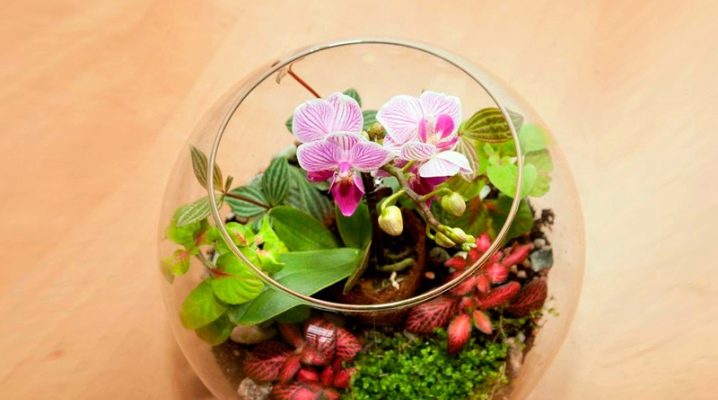
Flowers are the permanent companions of a person throughout his life. Until recently, flower arrangements from cut flowering plants were in demand, but times have changed, now buyers increasingly want to purchase fresh flowers in pots. A living plant will be able to delight a loved one not only on the day of the celebration, but also for a long period, and caring for a flower will give positive emotions and joy.
In flower shops you can see a huge assortment of plants. The orchid is one of the most beautiful of them, which is popular in many countries around the world. An orchid in a glass flask is a modern idea in the world of floristry. This plant can replace the standard bouquet and decorate any room.
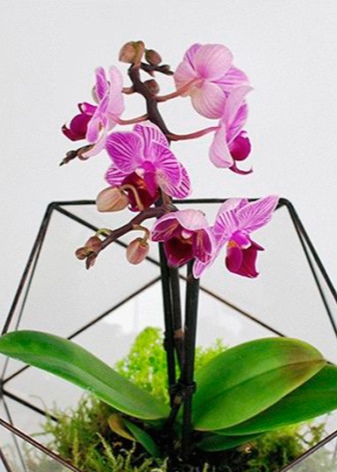
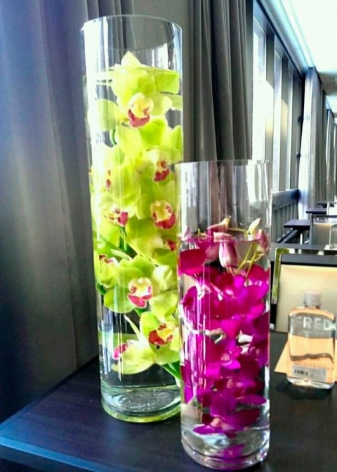
Peculiarities
Orchid is a representative of the largest family of monocotyledonous plants, native to South America, Thailand, China and India. An orchid in a flask is an unusual composition that pleases, surprises and gives positive emotions all year round. Florists identify the most popular varieties of this flower that can be grown without land:
- wanda;
- phalaenopsis;
- cymbidium;
- oncidium.
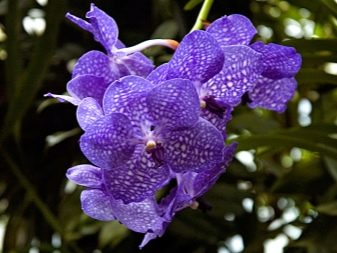
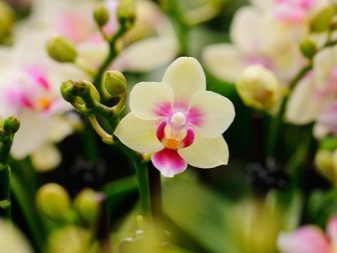
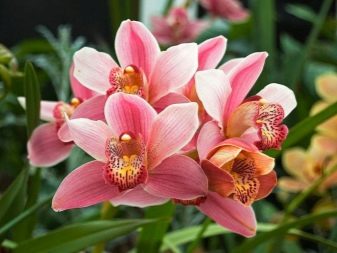
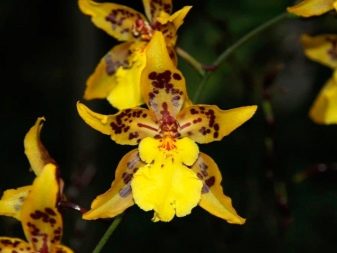
Biologists distinguish several types of this plant:
- epiphytes - an unusual plant that grows on the trunks of large trees and receives nutrients from the air;
- lithophytes - a rock form of a plant that feeds on its own remains or moss;
- overground - a flower, whose habitat is a temperate and tropical climate.
The main feature of this flower is the absence of a long dormant period.
During the growing season, several new leaves are formed, and under favorable conditions, the plant will give a bright and beautiful flower twice a year.

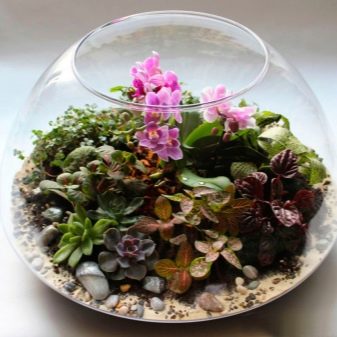
Florists highlight several undeniable advantages of growing an orchid in a vase:
- stable moisture retention;
- high aesthetic level;
- unusual design.
Disadvantages:
- fragility of the flowerpot;
- decay of roots;
- lack of air;
- hypothermia of the root system in winter.
On the shelves of flower shops, you can see two types of plants according to the way they are placed in a container:
- with full placement in a glass container;
- with protruding parts.
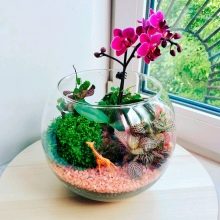
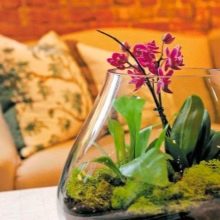
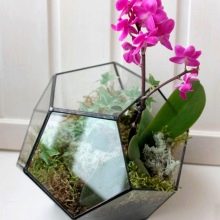
Florists recommend giving preference to those plants in which the roots are located at the bottom of the glass container, and the flowers are outside. Signs of a weak plant, the purchase of which must be abandoned:
- barrel instability;
- the presence of dark spots on leaves and flowers;
- weak root system;
- the presence of rot and signs of fungal diseases.
A hydrogel will help replace the nutrient potting mix. On the shelves of flower shops you can find orchids in flasks, capsules and bottles. Flaska is a small vacuum bottle that contains seeds or teenage plants. Among the huge number of positive characteristics of this option, florists distinguish the following:
- low price range;
- wide range of;
- transportability;
- the ability to grow a plant yourself.
The main disadvantage of acquiring a young plant is getting peduncles after 5 years.
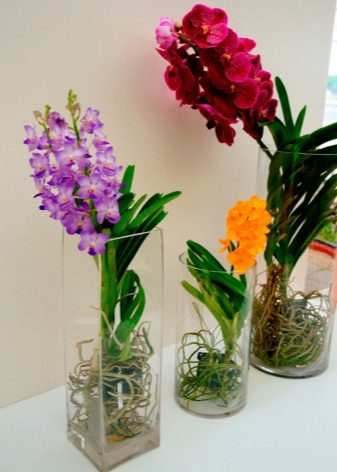
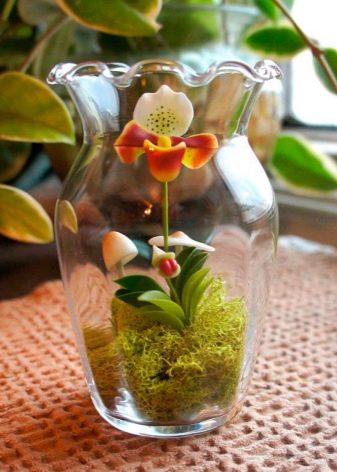
Capacity requirements
The correct choice of capacity is the key to the formation of a strong and healthy plant. It is impossible to grow a flower in a completely closed container, an airtight container can only be used for germinating seeds. Factors that influence the choice of a glass vessel:
- type of flower;
- stem height;
- the size of the root system.

The most popular orchid vase shapes:
- elongated;
- extended;
- glassy;
- bowl-shaped;
- rounded.
Spherical flowerpots and vases in the form of cognac containers have a special aesthetic appearance. There are practically no color restrictions for glass containers. Signs of a properly selected vessel:
- there is enough space for free placement of leaves;
- matching the size of the container to the height of the flower.
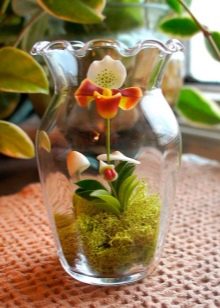
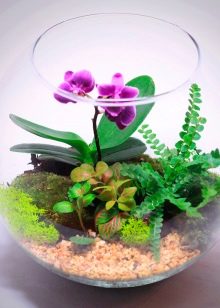

The container rate in the form of a glass or glass is suitable only for small plants with an underdeveloped root system. Experts recommend giving preference to glass vessels, which have a number of undeniable advantages:
- spectacular appearance;
- no barriers to light penetration;
- airiness and lightness;
- a wide range of shapes and sizes;
- beneficial emphasis on the beauty of the flower;
- high level of sustainability;
- low price range;
- no need to use pallets;
- availability in assortment in all stores.

Disadvantages - lack of holes for drainage, cooling of the root system, rapid contamination of the flowerpot and its fragility. If it is impossible to use a glass container, you can purchase a flowerpot made of transparent plastic.
When choosing the necessary container for a flower, one must take into account the general stylistic direction of the room.
Its decorative design will help to emphasize the individuality of the composition.
How to care?
To get a beautiful plant when planting seedlings the following rules must be observed:
- purchasing only healthy specimens;
- preparation of a special planting mixture;
- the creation of a drainage system;
- moderate and timely watering.
Before planting an orchid in a glass pot, you must thoroughly wash and sterilize the container. The following types of drainage material must be laid at the bottom of the container:
- expanded clay;
- gravel;
- fragments of stone and brick;
- pebbles.
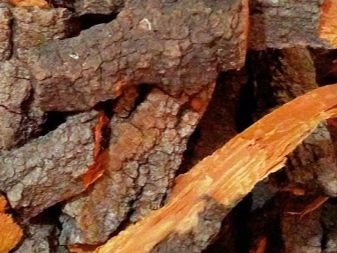
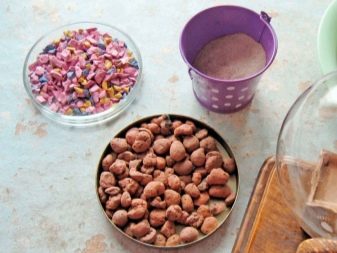
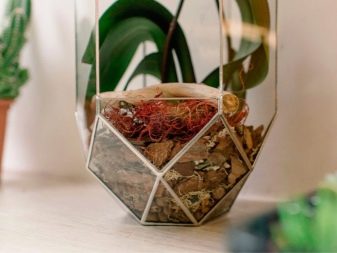
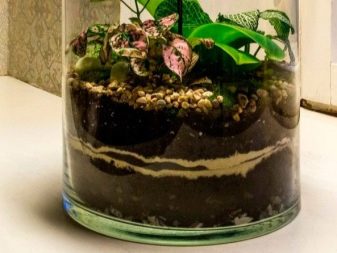
The prepared container with drainage should be poured with warm water for 30 minutes, which must be drained before planting the flower. It is necessary to cover the entire area near the root collar with wet pieces of moss.
Some orchid species do not need a special drainage layer.
Positive aspects of the lack of a substrate:
- prevention of decay of the root system;
- lack of pests;
- free supply of oxygen to the roots;
- no need to carry out a transplant;
- maximum production of nutrients from the water by the plant.
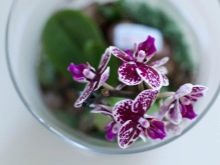
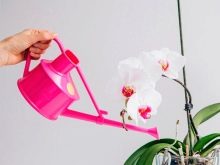
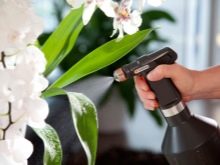
Direct plant care consists of the following steps:
- watering;
- top dressing;
- airing;
- disinfection.
To water this type of plant, it must be immersed in clean, settled water at room temperature for 30 minutes. It is strictly forbidden to immerse the neck and leaves in the liquid. Experts recommend replacing watering with spraying. In winter, this procedure must be carried out daily, and in summer it is enough to moisturize the root system 2-3 times a week.
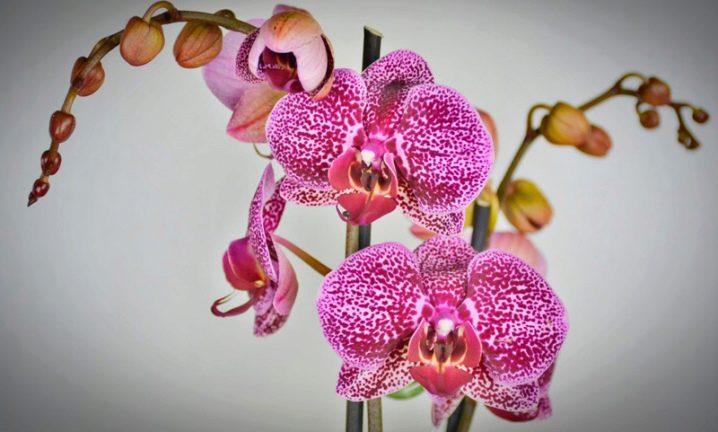
Large plants can be watered directly in a flask, into which you need to pour a small amount of prepared water, and after a few minutes, carefully drain off the excess liquid. Moisture deficiency indicator - a change in the color of the root system. If the roots have acquired a brown tint, it is necessary to quickly begin to restore the water balance of the plant.
Like any plant, orchids need feeding. Mineral fertilizers, suitable for the type of plant, must be dissolved in water for irrigation according to the manufacturer's instructions. Has a positive effect on the flower and foliar feeding.
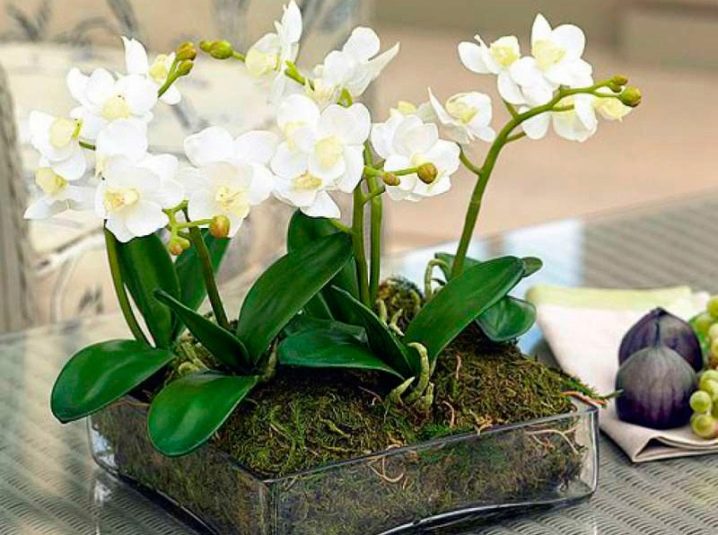
Due to the impossibility of air circulation in the glass container, as well as high humidity, it is necessary to periodically ventilate the plant in it. To carry out this event, it is enough just to leave the flower in the open air for a while.
Regular airing will help prevent the development of various fungal diseases of the root system.
For disinfection, you can use "Fitosporin", some types of antibiotics and fungicides. In the case of a weak root system, gardeners recommend immersing the plant in Kornevin's solution or other stimulants for the growth of the root system. To prevent the formation of salt deposits, it is necessary to regularly process the glass container with a weak solution of potassium permanganate.
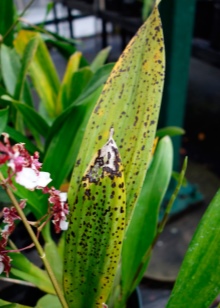
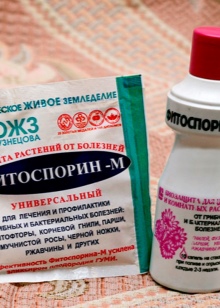
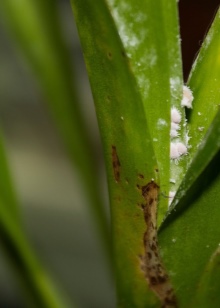
To maintain a high aesthetic level, florists recommend timely removal of yellow and dry leaves, monitor the possible appearance of parasites, provide a comfortable temperature regime and a sufficient level of illumination. Professional gardeners recommend following these guidelines when growing an orchid:
- placing a flowerpot on the windowsills on the north side;
- protection of the flower from direct sunlight;
- using only transparent containers that will ensure the maximum level of photosynthesis;
- pieces of pine bark are the best type of substrate that retains moisture well and has a decorative look;
- as the plant grows and the upper leaves wilt, it is necessary to add a substrate;
- immersion of a plant in cold water can lead to its disease;
- if water gets into the leaf axils, it is necessary to quickly remove the liquid with a dry cloth to prevent the development of putrefactive processes;
- frequent watering is the reason for the appearance of cracks in the foliage, and rare moisture of the plant will lead to wrinkling and wilting of the leaves;
- for feeding, it is advisable to use ready-made complexes of mineral fertilizers;
- the frequency of application of mineral fertilizers depends on the time of year: in the summer - 2 times a week, in the winter - once a week;
- to exclude deformation of the trunk, it is necessary to regularly change the location of the plant relative to the sun;
- during the formation of the bud, it is necessary to attach a support to the trunk to avoid its deformation;
- the optimal difference between day and night temperatures is 6 degrees;
- mandatory use of artificial lighting in winter;
- dry peduncles must be removed.
Particular attention should be paid to caring for flower arrangements in glass containers, which consist of cut orchids.
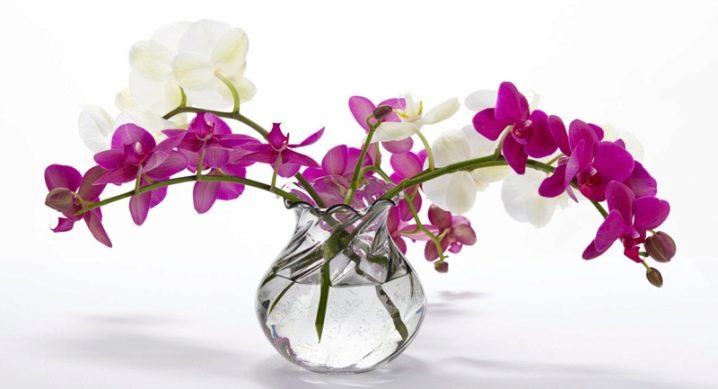
The brought bouquet must be carefully removed from the container, cut off the stems and placed in a vase of warm water with a few drops of alcohol or vodka. The most suitable place is a shaded area without heating appliances.
Possible problems
Novice gardeners can face a number of difficulties when growing an unusual plant. Ignoring the problems that have arisen can lead to his death. Experts identify a list of the most common problems during orchid cultivation and how to solve them.
- Decay of foliage - improper watering. In case of damage to the trunk by rot, the plant cannot be saved.
- Withering - damage to the root system by dangerous insects.
- The appearance of mold plaque - low level of illumination.
- Mechanical damage to the root system - violation of transportation rules.
- Decay of roots - violation of the irrigation regime.
- Musty smell - non-observance of the ventilation rules.
- Salt deposits and algae - non-compliance with sanitary standards and irregular washing of the vessel.
- Soft foliage structure - the presence of infection in the substrate or drainage.

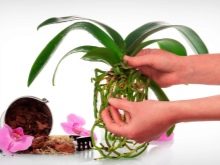
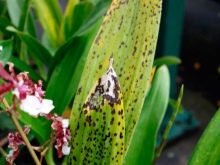
Particular attention should be paid to the most common diseases of this plant:
- spotting;
- fusarium;
- bacterial rot;
- viral diseases.
Among the dangerous insects, the following types should be distinguished:
- thrips;
- scabbards;
- mealybug;
- spider mite.
For the correct transplant of an orchid into a glass flask, see below.































The comment was sent successfully.